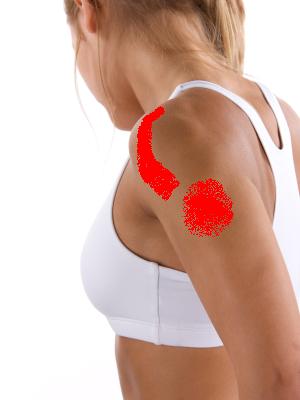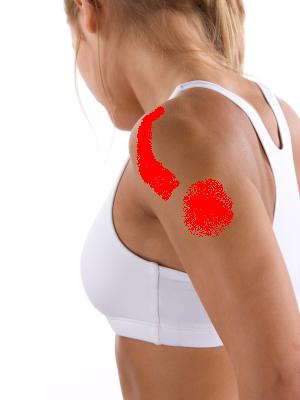Shoulder Pain
The rotator cuff is a general term used to describe four muscles in the shoulder that lie deep to the deltoid muscles. These muscles include the infraspinatus, supraspinatus, teres minor and subscapularis. Of these muscles, the supraspinatus is the most commonly injured.
Supraspinatus Tendon
The supraspinatus muscle is located on the top and back of your shoulder / shoulder blade. It does various functions, most notably bringing your arm up from your side. Shoulder pain is often due to supraspinatus Injury. It can occur in the tendon area of the supraspinatus tendon and can range from tendinosis to a tear.
Strengthening for the Supraspinatus
Traditionally it has been thought that “empty can” movement is what best challenges the supraspinatus muscle. To perform this exercise you would move your arm to approximately 45 degrees between your front and side and bring your arm upwards (with your thumb down).
What is the best way to Strengthen the Supraspinatus?
A 2007 study published in the Journal of Athletic Training investigated the activity of the supraspinatus during various exercises. The exercises investigated were the standing full can (thumb up), standing empty can (thumb down) and prone full can (lying on the stomach with the thumb up). The results found that each exercise activated the supraspinatus to the same extent; however the standing full can isolated the supraspinatus the best.
Conflicting Results?
To cloud the picture, a different study published in 2009 found that the supraspinatus was activated equally with various exercises but the deltoid activity was decreased with the prone full can exercise. Unfortunately, this is an example of two studies with different results and therefore different specific recommendations for isolating the supraspinatus. Regardless, it seems that either the standing full can exercise or the prone full can exercise may be your best options, depending on the patient’s symptoms. It seems that the balance of the literature is no longer advocating empty can testing or strengthening for specifically isolating the supraspinatus muscle. Keeping the thumb upwards (full can) seems to be a better option for rehabilitating or investigating the integrity of the supraspinatus.
Treatment for Shoulder Pain
Our clinic uses a variety of treatment methods for injury to the rotator cuff muscles (like the supraspinatus). Active Release, Laser Therapy, Graston, IFC (interferential current) and acupuncture are frequently used for this condition.
For more information or for an appointment with our chiropractor or physiotherapist, please call or email us. info@burlingtonsportstherapy.com
References
Boettcher CE, Ginn KA, Cathers I. Which is the optimal exercise to strengthen the supraspinatus? Medicine & Science in Sports & Exercise 2009; 41(11): 1979-1983.
Brookham R et al. Construct validity of muscle force tests of the rotator cuff muscles: an electromyographic investigation. Physical Therapy 2010; 90(4): 572-580.
Hughes PC, Taylor NF, Green RA. Most clinical tests cannot accurately diagnose rotator cuff pathology: a systematic review. Australian Journal of Physiotherapy 2008; 54: 159-170.
Kibler WB et al. Electromyographic analysis of specific exercises for scapular control in early phases of shoulder rehabilitation. American Journal of Sports Medicine 2008; 36(9): 1789-1798.
Reinold MM, Macrina LC, Fleisig GS, Ellerbusch MT. Electromyographic analysis of the supraspinatus and deltoid muscles during 3 common rehabilitation exercises. Journal of Athletic Training 2007; 4: 464-469.
Reinold MM, Escamilla R, Wilk KE. Current concepts in the scientific and clinical rationale behind exercises for glenohumeral and scapulothoracic musculature. Journal of Orthopaedic and Sports Physical Therapy 2009; 39(2): 105-117.
Disclaimer https://burlingtonsportstherapy.com/blog/disclaimer/









